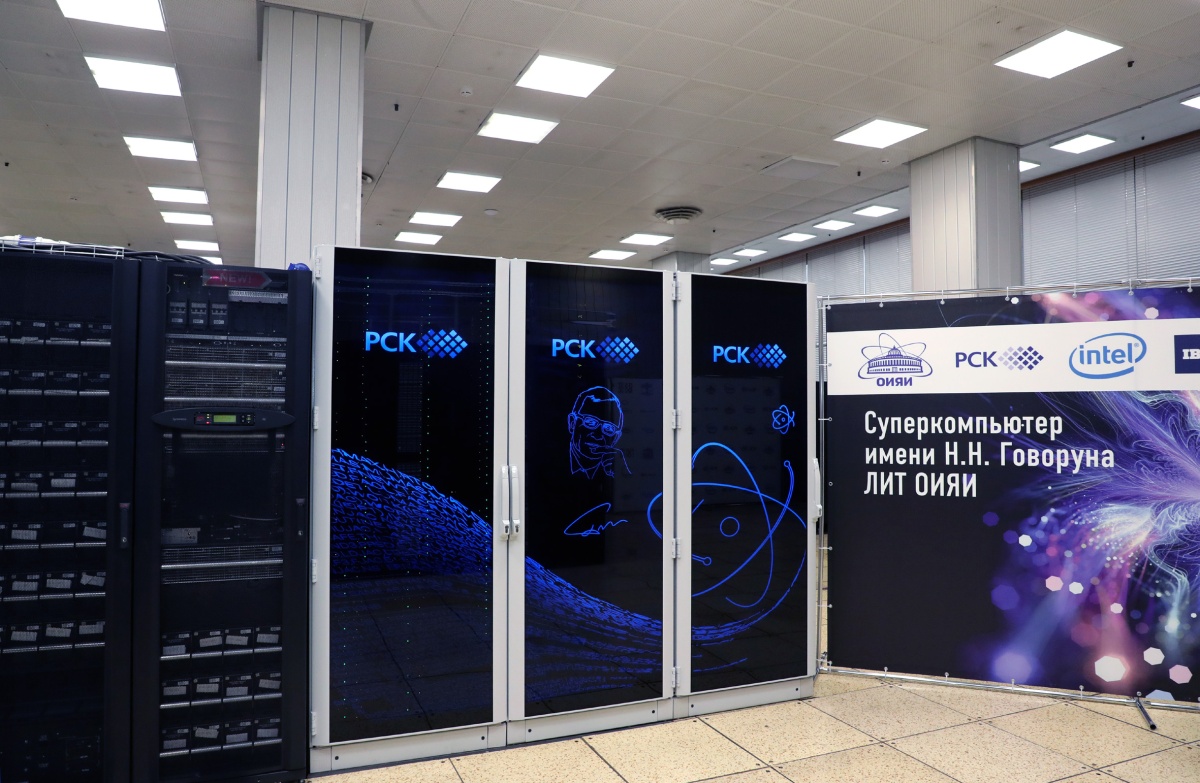SKIF and JINR signed cooperation agreement
Media, 03 March 2022
The Centre for Collective Use “Siberian Circular Photon Source” of the Boreskov Institute of Catalysis of the Siberian Branch of RAS (CCU “SKIF”) and the Meshcheryakov Laboratory of Information Technologies JINR started their cooperation on the creation of the IT infrastructure of the CCU “SKIF” and professional training of specialists to ensure its operation.
“JINR has a well-developed IT infrastructure. It is compact, productive, efficient in energy consumption, and scalable. The “Govorun” supercomputer is the basis of this infrastructure. It solves tasks of all the JINR laboratories, including the megascience class facility the NICA collider. Such facilities can be called factories for scientific data generation, as they produce terabytes of information every day. This information should be collected, processed, and stored. We are going to construct a similar infrastructure complex at SKIF . For this purpose, the JINR experience is so important for us,” Director of the CCU “SKIF”, Doctor of Physics and Mathematics Evgeny Levichev noted.
As part of the cooperation, the parties have developed technical requirements for the Data Processing Centre of the experimental stations of the CCU “SKIF”. The Centre consists of the high-performance computer and the information storage system. On this basis, specialists developed a technical task for the Data Processing Centre. It was sent to JSC CONCERN TITAN-2 that is the general contractor of the CCU “SKIF”.
“MLIT JINR has accumulated an extensive experience in the creation and the development of the global computer infrastructure for the experiments at the Large Hadron Collider (LHC) in CERN. Using this experience, we are actively developing distributed systems for data collection, storage, processing, and analysis for the experiments at the NICA accelerator complex based on the integration of grids, clouds, supercomputers, and datalakes. We are ready to share our experience with colleagues from the SKIF megascience project in the creation and the development of data storage, processing, and analysis infrastructure for this project, as well as its integration into the distributed environment of the megascience class projects,” MLIT JINR Director, Doctor of Technical Sciences Vladimir Korenkov commented.
The organization of distributed storage and access to scientific data using the megascience datalake technology is an important operation aspect of the future DPC CCU “SKIF”. Specialists of the CCU “SKIF” and JINR will work together on the creation of such a system.
“This approach will provide access to experimental data to a wide range of interested users, first of all, the research community. It is one of the modern science development trends,” Deputy Director for Scientific Work of the CCU “SKIF”, Doctor of Physics and Mathematics Jan Zubavičius said.
Moreover, since 2021, the National Research Computer Network of Russia (NIKS) has been developed. The “Govorun” supercomputer is already a part of it. In prospect, all Russian supercomputers are going to join the network, including the CCU “SKIF” supercomputer. Thus, scientists from different regions of Russia will be able to efficiently use the power of supercomputers. JINR specialists will share step-by-step information with the CCU “SKIF” necessary for the integration into NIKS.
Besides, supercomputer modeling, such as surrogate, mathematical, simulation, statistical, is relevant for the CCU “SKIF”. It will be one more topic of the cooperation with JINR. Moreover, organizations’ plans include the creation of training programmes on system administration of the supercomputer infrastructure. The Meshcheryakov Laboratory of Information Technologies JINR will hold internships on such programmes for young specialists from the CCU “SKIF”.
The Govorun supercomputer is the first hyper-converged and 100% liquid cooled supercomputer in the world. Theoretical peak performance of the machine is one petaflops . The supercomputer was named after Nikolai Nikolaevich Govorun, the Director of the Laboratory of Computing Techniques and Automation JINR (now the Laboratory of Information Technologies) in 1988-1989.
